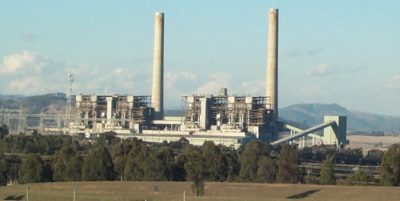Energy Chaos in Australia: Closing the Liddell Power Station

Australia is having an energy crisis. A country with such abundant resources is incapable it seems, of handling matters of reliable supply, either in terms of affordability, or in terms of delivery. The situation has been further muddied by the inability of the parties in parliament to find common ground. The gloves are off, and there is blood in the chambers.
The blame game is being fanned with the enthusiasm of Tourette syndrome sufferers. The impoverished state of Australian political speak is evident in the use of various terms of derision. Labor frontbencher, Joel Fitzgibbon, has become “No coal Joel” to members of the government.
The leader of the opposition, Bill Shorten, has been labelled by the uninventive Prime Minister “Electricity Blackout Bill”. “There’s never been a more exciting time,” rues comedian Mark Humphries, “for crap nicknames.”[1]
A political form of schizophrenia has developed towards the energy market, though it had already announced its arrival with the previous Prime Minister, Tony Abbott. Apparently leaving matters to the market, the religious bread and butter of the conservative coalition government, is not the way to go on this one.
This interventionist approach has manifested itself in two ways. Companies, like AGL, are battered (at first glance) into making business choices that favour the LNP’s policy agenda. Monsters like Adani are rewarded with subsidies to further mine a commodity that is fast reaching economic obsolescence.
The Turnbull government, in a state of numbing panic, has badgered AGL boss Andy Vesey who is intent on moving his company from coal generation to renewables. This would see the coal fired Liddell power station in New South Wales’ Hunter Valley closed.
In horror, the government is intent on treating the energy issue as an ideological one, though it has shaped it as a matter of necessity more for their survival than anything else. This necessity was borne, supposedly, by the assessment by the Australian Energy Market Operator (AEMO) that much of the east and southern coast of the country could face the prospect of intermittent blackouts this scorching summer.[2] Just to add some zest to the forecast, the AEMO also suggested these might continue for many more summers.
Prime Minister Malcolm Turnbull and his colleagues, preferring to turn their minds away from the repeated comments by Vesey that the Liddell power station’s days were numbered, took the insistent route. Insist, for instance, that the station be sold to a third party rather than close. Insist that this agreement would enable the station to produce electricity for five years beyond 2022 so that it might make up for the possible 1000 megawatt shortfall in dispatchable base load power.
Coal, the Turnbull government has decided, cannot be factored out. Never mind what the penny counting banks say; or the somewhat unscrupulous energy companies themselves. Or the bleeding heart environmentalists and the cool calculating economists, the latter reminding the government that using coal for electricity is no longer viable.
As one of the doyens of the Australian science establishment, Alan Finkel, noted in his independent review of Australia’s national electricity market, wind and solar sources are proving more attractive, with coal losing its economic edge.[3] Listening to members of the government coalition, and you might be tempted to think otherwise.
Caught in a dinosaur’s twilight zone, the Turnbull government has brought its knuckledusters to the political podium. The opposition Labor party has been clipped around the ears: Do you really want to be responsible for putting coal workers out of work in your electorate, No coal Joel?
The result of hectoring Vasey yielded a minor, if only distracting concession – 90 days, in fact – during which options to keep the station open, selling it, or finding a suitable market equivalent to ensure supply, will be considered. In the cocksure words of Energy Minister Josh Frydenberg, the outcomes would ensure that there would be no “adverse impact on consumers in terms of those price and reliability on the system.”
The bully of the show, in this case the prime minister, was less sure. AGL had not “articulated what [the plan] is, so we don’t know and, frankly, I don’t think they do either.” Naturally: having wished to close the plant and move off coal, the board was now being asked to revise, renege, and repudiate.
The Greens climate change spokesman Adam Bandt MP was unimpressed by the proceedings: Turnbull was simply delaying the sword of inevitability:
“All the government has done has forced AGL to bring forward its planning for new renewables. AGL’s board will discuss what they were going to discuss anyway.”[4]
Vesey’s own comments suggest that.
“Short term, new development will continue to favour renewables supported by gas peaking. Longer term, we see this trend continuing with large scale battery deployment enhancing the value of renewable technology.”[5]
Even after receiving a mock bruising from Turnbull, Vesey could still maintain the unflappable line on coal.
“In this environment, we just don’t see new development of coal as economically rational, even before factoring in a carbon cost.”
Turnbull’s handiwork had not extracted everything government members had wanted. Taking the truncheon to the energy companies has been fashionable of late down under, and the identifiable Vesey has certainly left his mark on members of the Coalition.
“It appears,” claimed an accusing Craig Kelly MP, “AGL speaks with forked tongue.”[6]
Less forked, perhaps, than realistic.
Dr. Binoy Kampmark was a Commonwealth Scholar at Selwyn College, Cambridge. He lectures at RMIT University, Melbourne. Email: [email protected]
Notes
[6] http://www.sbs.com.au/news/article/2017/09/12/pm-not-sure-agl-has-post-coal-plan-ready
Featured image is from Wikimedia Commons.

